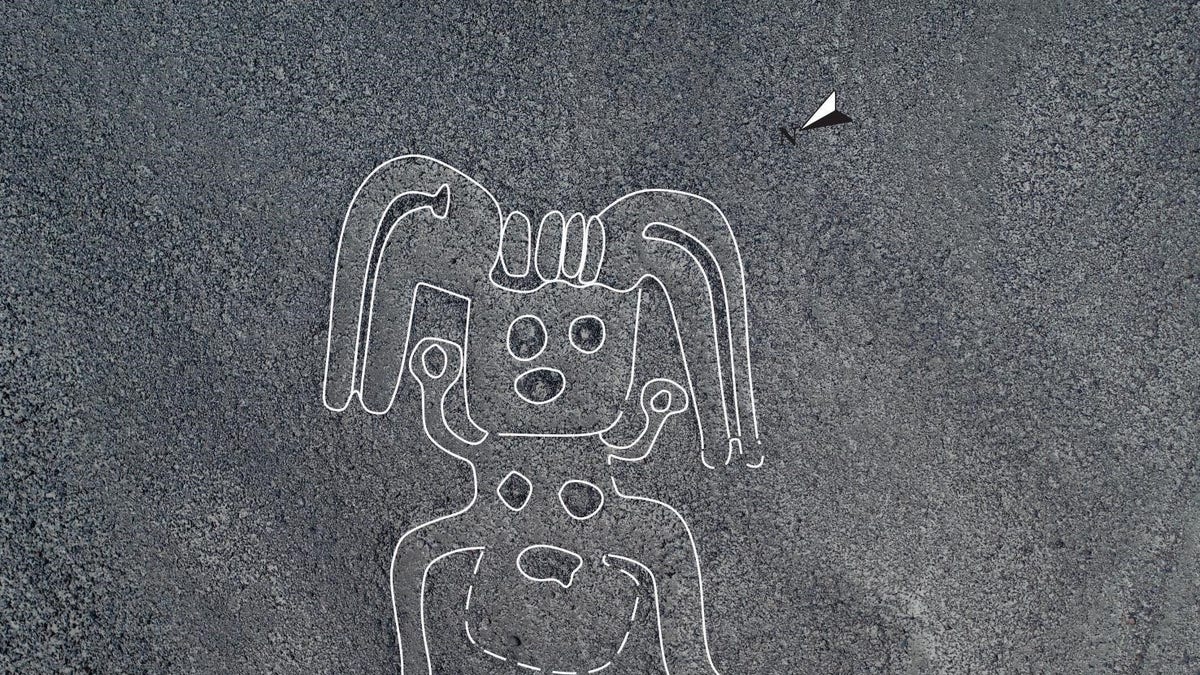Fox News Flash top headlines for Nov. 18
Fox News Flash top headlines for Nov. 18 are here. Check out what's clicking on Foxnews.com
Over 140 mysterious new geoglyphs have been discovered in Nazca, Peru, including strange ‘humanoid’ figures.
Researchers from Japan’s Yamagata University discovered 142 new glyphs. An additional new geoglyph was discovered using artificial intelligence from IBM Japan running on one of the tech giant's Power Systems servers. The technology helped researchers reveal the location of the humanoid figure, who appears to be brandishing some form of club.
MYSTERIOUS NAZCA LINES REVEAL THEIR SECRETS

A processed picture of a newly-discovered Nazca humanoid figure. (Yamagata University)
Other new glyphs show a two-headed snake that appears to be devouring two people, a bird, a fish and another humanoid.
The new geoglyphs date from the Initial Nazca period between 100 B.C. and 100 A.D. and the Early Nazca Period from 100 A.D. to 300 A.D.
VISIBLE ONLY FROM ABOVE, MYSTIFYING 'NAZCA LINES' DISCOVERED IN MIDEAST

The geoglyph discovered using AI technology from IBM Japan and the tech giant’s Watson supercomputer. (Yamagata University/IBM Japan)
A UNESCO World Heritage Site located about 249 miles south of Lima, the Lines are regarded as one of archaeology’s great mysteries. The lines are scratched into the dark ground to reveal the lighter-colored earth underneath and are best viewed from the air. They depict a range of animals, plants, imaginary beings and geometric figures.

A newly-discovered two-headed Nazca Line snake that appears to be devouring two people. (Yamagata University)
Etched into the ground by pre-Inca people, the Nazca Lines date from 400 B.C. to 1000 A.D. Mystery, however, still swirls around why they were created. Theories include that they are a primitive Sun calendar, an irrigation system or even an alien landing strip, according to LiveScience.
CLICK HERE TO GET THE FOX NEWS APP
Follow James Rogers on Twitter @jamesjrogers

